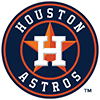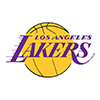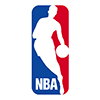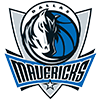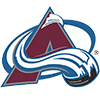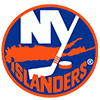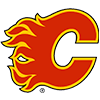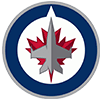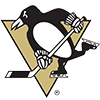With the NFBC Main Event and Primetime taking place both live and online over the next two weekends and the RotoWire Online Championship in full swing, I figured this would be a good time to share some pre-draft thoughts. These thoughts are crafted specifically towards the NFBC contests, but are also applicable to almost any other draft you may have upcoming.
Average Draft Position (ADP)
One of the interesting discussions among the high stakes drafter centers on whether to use and how to use ADP. Some drafters use ADP as their draft sheet and will not reach too far off it and will snap up anyone who falls and then there are drafters on the other extreme who think using ADP is for sheep who cannot make a decision on their own. Most ADP lists available online build from mock drafts and are fairly worthless as people don't show up for mocks, draft trial teams they wouldn't normally draft or pay half attention. The NFBC ADP lists are created from a large number (190 as of March 17th) of drafts that are entirely from people in paid leagues. There are always some outliers of course, but for the most part, it gives a drafter a very good ballpark idea of where players usually go in NFBC drafts. In addition, the NFBC also breaks out the drafts conducted since March 1st in a separate list so people can get a better idea of where recently injured players like Cole Hamels or
With the NFBC Main Event and Primetime taking place both live and online over the next two weekends and the RotoWire Online Championship in full swing, I figured this would be a good time to share some pre-draft thoughts. These thoughts are crafted specifically towards the NFBC contests, but are also applicable to almost any other draft you may have upcoming.
Average Draft Position (ADP)
One of the interesting discussions among the high stakes drafter centers on whether to use and how to use ADP. Some drafters use ADP as their draft sheet and will not reach too far off it and will snap up anyone who falls and then there are drafters on the other extreme who think using ADP is for sheep who cannot make a decision on their own. Most ADP lists available online build from mock drafts and are fairly worthless as people don't show up for mocks, draft trial teams they wouldn't normally draft or pay half attention. The NFBC ADP lists are created from a large number (190 as of March 17th) of drafts that are entirely from people in paid leagues. There are always some outliers of course, but for the most part, it gives a drafter a very good ballpark idea of where players usually go in NFBC drafts. In addition, the NFBC also breaks out the drafts conducted since March 1st in a separate list so people can get a better idea of where recently injured players like Cole Hamels or Hisashi Iwakuma now find themselves chosen in drafts.
The most valuable thing that the ADP lists can be used for is to help identify how far you need to reach up for one of your targets. If your player has an ADP in the 16th round, there is no reason to reach for him in the 8th round and just knowing that carries a lot of value in itself. Of course, there is no guarantee that you will get your guy at his ADP, especially if he is a young hyped guy on the upswing, but at least you can prepare to take him a couple rounds with a good shot to get him without wasting the earlier pick. Of course, there is no guarantee that someone will not reach higher than you, but that is part of the game as you will rarely be the only player to target someone. People often ask about reaches and when to get your guy and my general rule is that it is not a reach if the player is not coming back to you. If you are picking 30/31 and not again until 60/61 and the player you want has an ADP of 50, you better get him now, because there is a high likelihood that he will be gone before your next. If the player is not coming back and this is your only chance to get him, I never consider that a reach. If that is whom you want, go get the player, this is your team, but just try and do your best to get him at the smartest time.
Finally, how do you deal with a player that you are neutral on who happens to slip in your draft? Some drafters do not care about this while others will take anyone who slips enough spots as a "value play". When this happens in my draft, the first thing I do is a quick search on RotoWire to make sure I have not missed any late breaking injury news. At that point, as long as it is not a player I have chosen to avoid for some reason, I tend to be one who will often grab the player as long as it fits into my team structure. This may cause people to call me a slave to ADP, but after that many drafts with a lot of very smart people drafting, I can admit that I am ok putting a touch of stock in their opinion. For me, this usually only holds in the first half of the draft as once I am in the back half, I am usually making picks based on positional or categorical needs or targeting my breakout players that go in the back half of the draft.
When drafting in any of the NFBC events, it also pays to remember that you are competing with fantasy players who have been prepping for this for months and are the best fantasy players in the country, zero doubt. If there is a hot player or a guy you see on a lot of breakout lists, you can be sure that guy will be pushed up a round or two from their ADP on draft day. The level of confidence is very high with these owners and if they have a guy they want, trust me that they know the ADP and will not wait to grab their player. ADP is a very valuable tool to help you not jump too early and to get a general feel for the player pool and to recognize someone sliding in your draft. It is quite likely that a lot of your targets will be targets for other players, always be prepared to zig and zag and react to whatever happens in your particular draft.
The Billy Hamilton Conundrum
In my now eight years playing the NFBC Main Event, I am not sure there has been a more polarizing player than Billy Hamilton. Even among the best NFBC players as well as experts in the industry, there are people who think drafting Hamilton at his ADP is the way to win an overall championship and some people who think taking him that early is a team-crushing pick. Whatever your opinion may be on Hamilton, he is unlike any player I can remember in NFBC in that if you take him, he directly affects the strategy of your entire draft. If you commit a late fourth or early fifth round (his current ADP in 51 drafts since March 1st is 62.55), you are predicting that he will keep the job a large majority of the year and at that draft spot, you are probably hoping for 70+ stolen bases. If not, you would not select that early in the draft.
If you do take him, it is my strong feeling that you then want to build your team around those stolen numbers and that means focusing almost strictly on power with some token stolen bases here and there to supplement Hamilton. If he works out, that team suddenly becomes competitive in stolen bases largely because of a solitary player, which then allows an edge in power because they didn't have to focus on many steals at other spots. If Hamilton is a big success, one can see how you could really build an epic team around him. Of course, on the flip side, if he struggles and loses his job or gets sent to the minors early on, you are pretty much dead for any sort of overall consideration because there is no way to compete in stolen bases with a team built around Hamilton that then loses him. If you have sufficient stolen bases without Hamilton, then you didn't draft correctly around him and will likely then be low in power stats. He is a fascinating guy to follow this year and I think he will be a bit all over the map in drafts as some leagues will have guys that want him early and are planning around him and other leagues will have no one willing to take the gamble in the fourth round. I look forward to seeing the range of his picks at the live events.
Draft Day
There is a lot of discussion, especially with the live events, of whether you should draft with a computer, with a paper list to cross off or with both. Also, if using a computer, do you use spreadsheets or draft software? There is no real answer to this question except to do what is best and easiest for you. Even among the best players, you will see everyone handles this a little bit differently. There are very successful players who work strictly off the computer and there are also guys who win consistently who would never dream of bringing a laptop to the draft. In fact, one of the NFBC best players there is, Rick Thomas, is well-known for coming to a live draft with only his one piece of poster board and pens, and trust me when I say from experience that it works very well for him.
I tend to be a mix between the computer people and the pen-and-paper contingency and that is the case whether I am drafting live or online. I like to keep one of the draft programs (I will plug RotoWire's draft software here as it is a very clean and easy set up to use whether through the software or via the mobile app) open and running just as a tool to track my team. I do not really care about the exact projections or numbers, but keeping a running total of my team's projected stats allows to get a good feel for what categories I need to focus on for my next few picks. This is especially valuable later on in the draft when I may be deciding between a stolen base specialist and a power hitter. I also find it helpful to have the draft software running in case I need refresh my memory on a player's historical stats or check a depth chart. However, my main tool is my printed spreadsheets. I keep one overall list sorted by ADP that I cross off each pick to see how the draft is progressing and to see what players are getting jumped ahead of ADP or may be slipping. I use this early on in the draft, mostly to make sure I am not missing someone who maybe has fallen in the draft. I also then have printed spreadsheets for each position with my personal rankings, which are broken down into tiers within each position. This is very helpful for me to see exactly who is available at each position, especially as the draft moves into the middle and later rounds. I almost exclusively draft off this list since it is completely sorted by my own preferences. That's what I do on draft day, but obviously everyone needs to figure out what most efficiently. Above all else, you don't want to be so preoccupied with entering data in a computer or crossing off so many lists that you miss anything or add stress to the process. The NFBC allows a co-manager at drafts and many people find it very valuable to have a friend sit with them to cross off names and keep their lists 100% up to date.
My final note goes for NFBC or any other drafts. I firmly believe that a lot of players concentrate too much on the first five to eight rounds when they are doing their draft prep. Obviously, some work needs to be done here to know the player pool and know what positions or categories to attack as you build the base of your team, but the early part of the draft is really the easy part. These are all players that are really good and that we all know very well. In fact, I don't even think about the first round players until I receive my draft spots. If I end up 1st in the Main Event, at that time, I can concentrate on Mike Trout vs. Miguel Cabrera and not stress whether I like Ryan Braun, Carlos Gonzalez or Bryce Harper more in the outfield, as all those players will be gone by the time I pick again. Of course, most of us do multiple drafts so we will likely end up figuring out those other players too, but focus on those decisions once you need to. If you don't end up with a #1 pick in any of your drafts, why waste valuable prep time in the pre-season figuring out who you like more between Trout and Cabrera.
In these ultra-competitive leagues, I feel that the draft is won or lost between rounds eight and twenty. These are the rounds when the draft opens up and ADP is no longer a big factor for most teams and you acquire the players that will support your star players and hopefully break out and become stars themselves. If you look at the drafts of the top players, almost every year, these are the rounds where they separated themselves from the rest of their league both in terms of specific players and roster construction. After round eight, the better players have a pretty good feel of what their team will look like and what stats and/or positions they need to focus on and they are able to assemble that puzzle successfully.
The last 10 rounds can provide some value too, but even the best players are taking backups or longer shot breakout candidates that are far from sure things. That does not mean that you should not make these picks count; make every pick for a reason. I see a lot of people (yes, even in high stakes leagues) that half-ass the last 10 rounds as they chat with friends or flip through magazines for player ideas or get distracted by other drafts in the room finishing up. A lot of these late picks will not work out and will serve as drops in the first month of FAAB, but at least get guys that you think have a shot to stay on your team long-term, not just because the game makes you fill up a bench. If you have a feel on a fourth outfielder breaking through or a closer in waiting ending up with the job soon, snag them in these rounds and hopefully reap the rewards, but make sure to have a purpose for each pick. Take a look at the ADP for players past pick 350 (pick 275 or so in 12 team leagues) and highlight some guys that you would like to take a shot on so when the draft is coming to a close, so at least you have some names you have researched. This is also a good time to grab some sneaky platoon players such as Padres pitchers or Rangers/Rockies hitters. These players can be quite valuable to slide in on offense for some half-weeks where you may have another hitter that has a minor injury or has some awful matchups.
Most of all - have a blast! We all wait all year for these drafts, don't forget to take a second and realize just how fun these leagues are and how great the hobby is. Happy Drafting!











